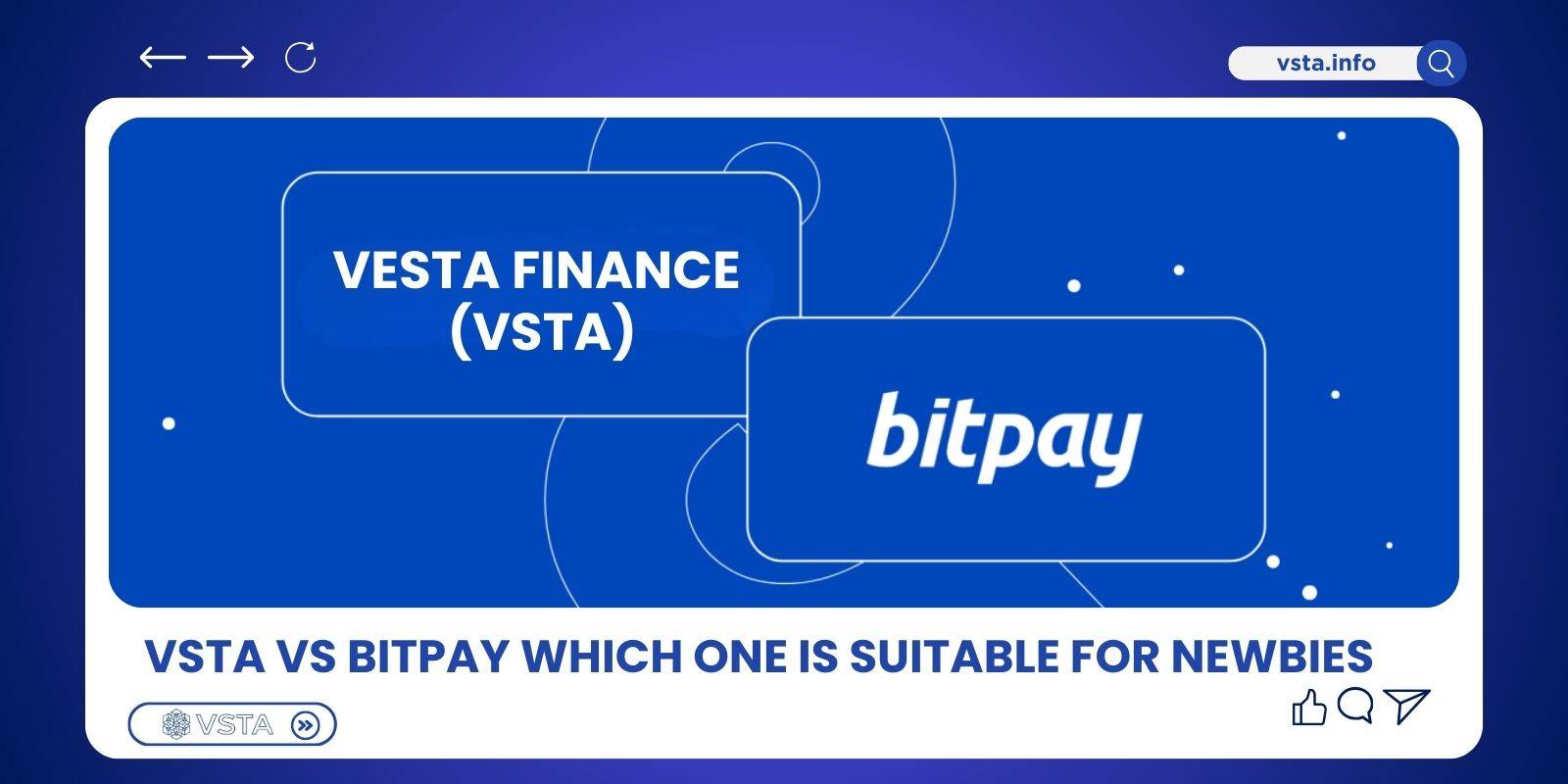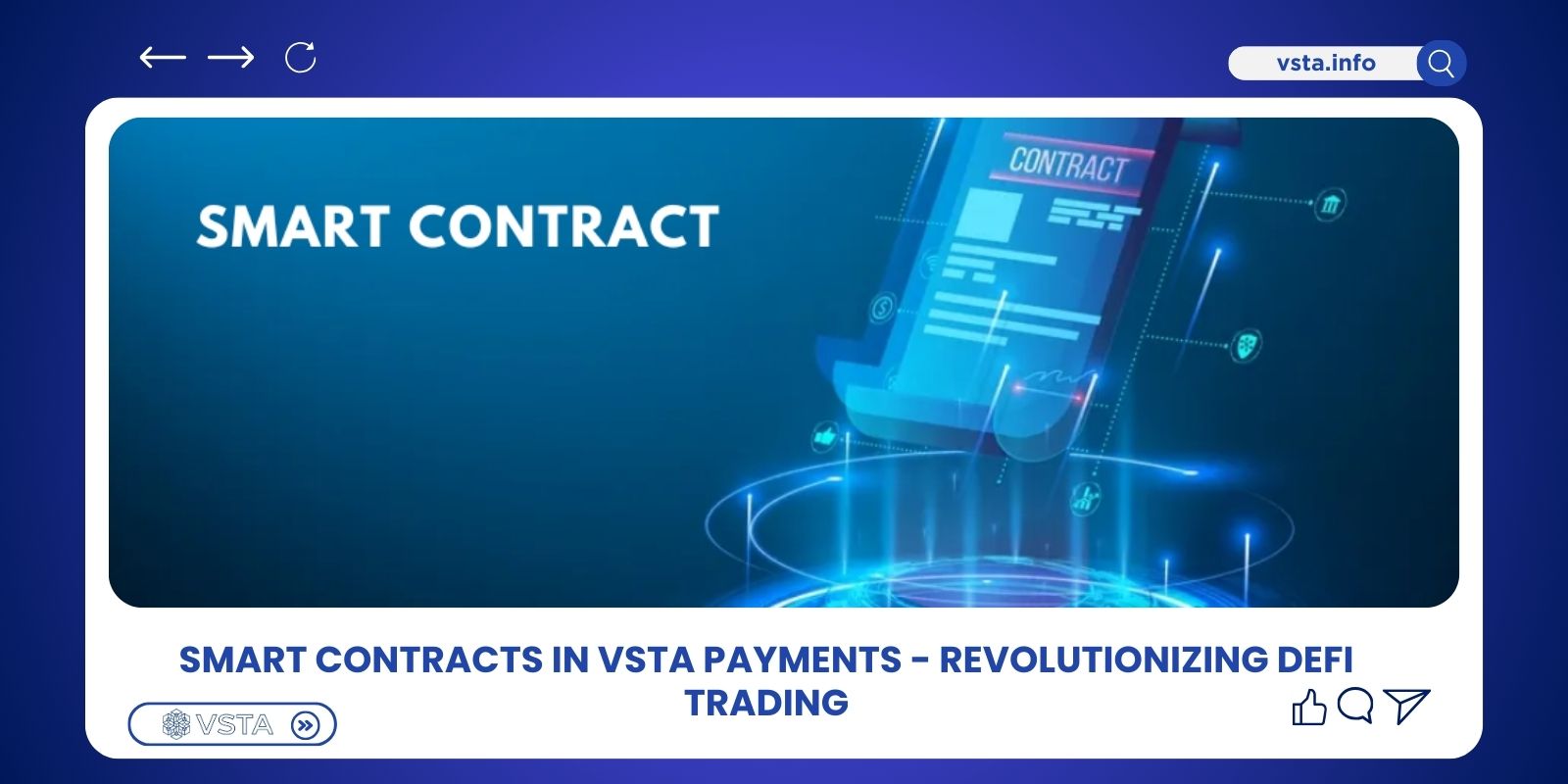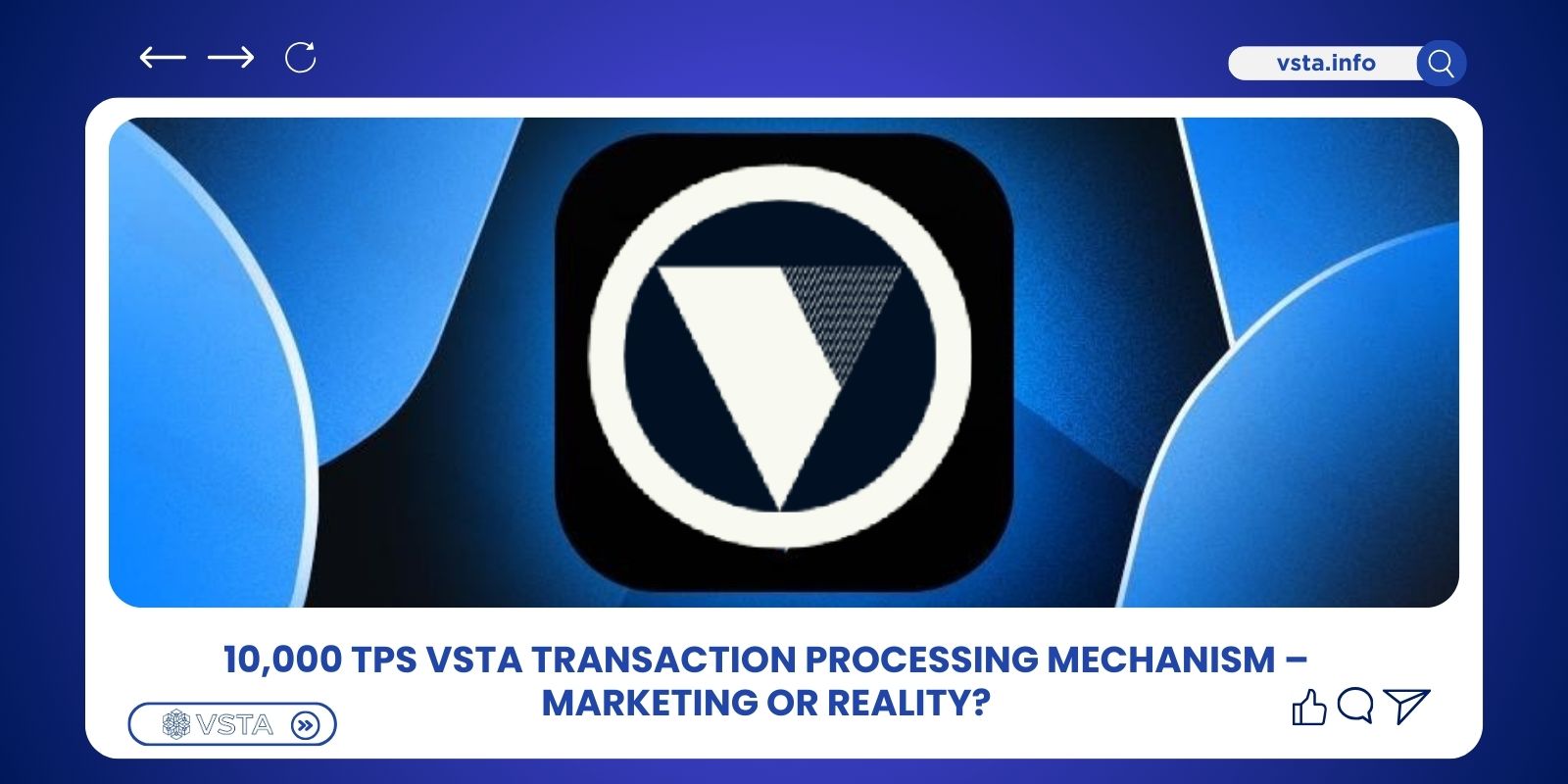The cryptocurrency market is growing rapidly, and two prominent areas attracting users are VSTA vs BitPay. VSTA offers opportunities to optimize profits within the DeFi ecosystem, while BitPay provides convenience in spending and real-world payments. Understanding these differences helps investors and users choose the solution that best fits their needs. Join VSTA in exploring the detailed article below to learn more.
Introduction to VSTA vs BitPay
What is Vesta Finance (VSTA)?
Vesta Finance (VSTA) is a DeFi protocol built on Arbitrum Layer 2, designed to provide decentralized borrowing solutions with low costs and fast transaction speeds. Its standout feature is that it allows users to collateralize digital assets such as ETH, gOHM, GMX, and more to borrow the stablecoin VST without relying on intermediaries.
In addition to borrowing VST, the platform also offers opportunities to stake VSTA tokens to earn rewards. It further enables liquidity provision in pools to maximize investor returns. These features make Vesta Finance an attractive choice for those who want to actively participate in the DeFi ecosystem.
What is BitPay?
BitPay is one of the world’s largest cryptocurrency payment platforms, founded in 2011. Its mission is to make it easy for both individuals and businesses to accept and use crypto in daily life. BitPay serves as a crucial bridge between digital assets and traditional commerce, enabling fast and secure payments with Bitcoin, Ethereum, and many other cryptocurrencies.
BitPay’s main services include merchant payments, the BitPay Card, and the BitPay Wallet. With a global acceptance network, BitPay has partnered with thousands of businesses and merchants, helping cryptocurrency evolve beyond an investment asset into a practical payment method for everyday use.

VSTA vs BitPay: Which One Should You Choose?
The choice between VSTA and BitPay depends on your usage goals. If you are focused on optimizing profits from DeFi – such as staking, lending, and providing liquidity – then VSTA is the right choice. The platform allows you to turn idle assets into passive income on the Arbitrum blockchain with low costs.
On the other hand, if your needs lean more toward spending and real-world payments, then BitPay is the optimal solution. BitPay enables you to easily shop, pay for services, or withdraw fiat money from your crypto assets through its wallet and BitPay Card, which are widely accepted worldwide.
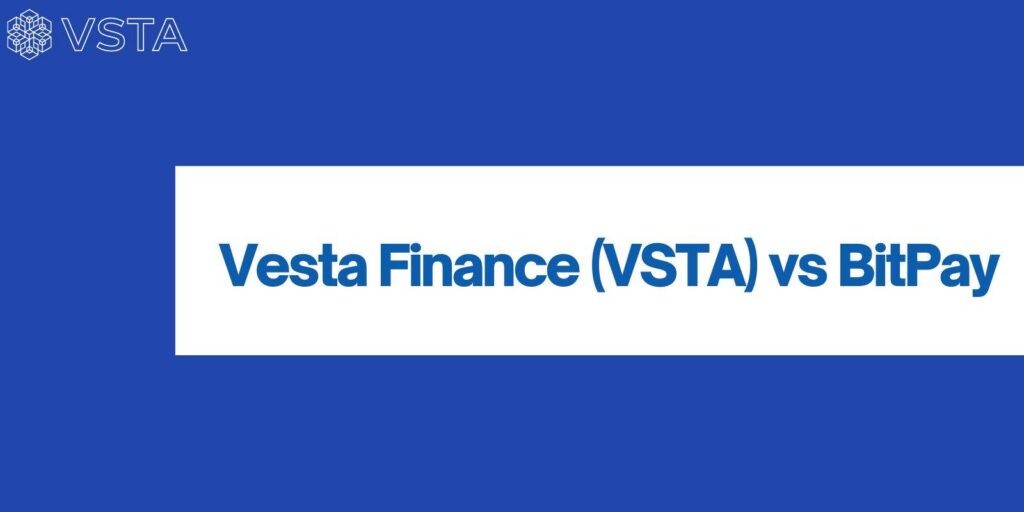
Why Compare VSTA vs BitPay
Comparing VSTA and BitPay is not simply about placing two crypto platforms side by side. It helps users clearly understand how each platform serves different needs within the blockchain ecosystem. VSTA represents the DeFi sector, focusing on generating profits through stablecoin borrowing, staking, and liquidity provision. Meanwhile, BitPay represents real-world payment applications, enabling crypto to be spent in everyday life.
Comparing these two platforms helps:
- Investors evaluate whether to engage in DeFi for profit opportunities (VSTA) or focus on payment utility (BitPay).
- Businesses and individuals choose the right tool — whether to use VSTA to optimize capital or BitPay to easily accept crypto payments.
- Newcomers gain a more comprehensive view of the differences between profit-driven investment and real-world consumer applications.
Pros and Cons of VSTA vs BitPay You Should Know
Key Advantages of VSTA vs BitPay
- VSTA: Operating on Arbitrum Layer 2, VSTA helps reduce costs compared to the Ethereum mainnet. All transactions are recorded on the blockchain, ensuring transparency and decentralization. Users can stake VSTA or provide liquidity to earn attractive rewards.
- BitPay: Widely adopted by businesses, stores, and services worldwide that have integrated BitPay. It features a user-friendly interface suitable for beginners and offers both a crypto wallet and a convenient payment card. BitPay also enables fast conversion from crypto to fiat for real-world spending.
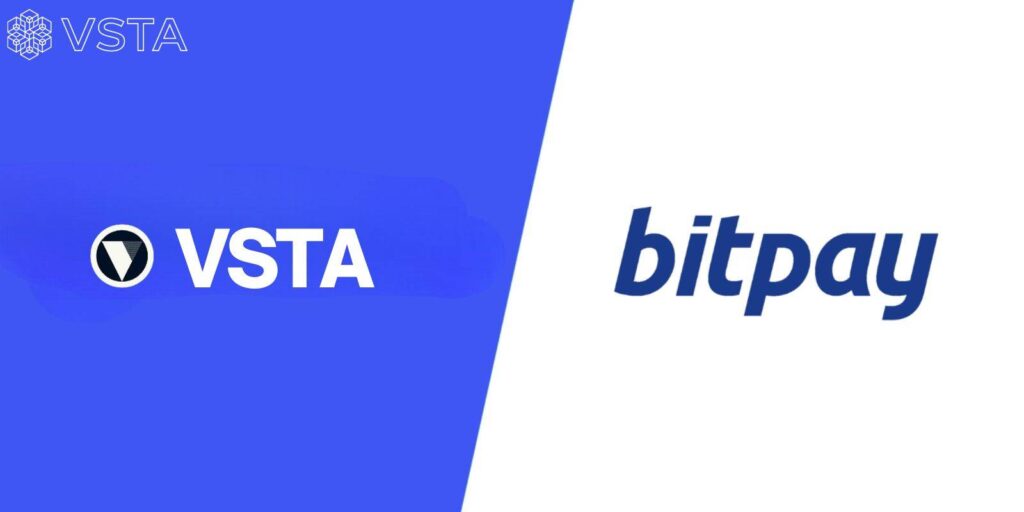
Disadvantages
- VSTA: Carries smart contract risks that could be exploited. Its growth is closely tied to the expansion of the Arbitrum network.
- BitPay: Primarily focuses on payment services and does not issue its own token to create additional community value. Payment fees vary depending on the blockchain used and can become high during network congestion.
Comparison: VSTA vs BitPay
| Aspect | VSTA | BitPay |
| Similarities: In essence, VSTA vs BitPay are completely different. Because VSTA DeFi generates profits while BitPay is a consumer/business payment. However, VSTA vs BitPay both promote crypto applications and increase utility. Especially, both are in the blockchain ecosystem, serving financial needs. | ||
| Nature | DeFi protocol on Arbitrum (Layer 2) | Crypto payment gateway & wallet/card solution |
| Use Case | Leverage, borrow VST, staking, liquidity provision to earn profits | Daily payments, sending/receiving crypto for individuals & businesses |
| Target Users | DeFi-savvy users who accept volatility & know how to manage risks | Users/merchants seeking real-world payments with less technical knowledge |
| Value Creation | Profits from interest, staking VSTA, LP rewards | Payment utility, crypto ↔ fiat conversion, BitPay Card |
| Token | Yes – VSTA (governance/incentives) | No native token |
| Transparency | 100% on-chain, smart contracts | Centralized payment infrastructure + blockchain integration |
| Cost | Low transaction fees (Arbitrum) | Fees depend on network & service type (gateway/card) |
| Main Risks | Smart contract risks, collateral volatility, liquidation | Service provider risk, dependency on regulations/KYC |
| KYC/Compliance | Usually no KYC for on-chain interactions (depends on dApp/bridge) | Merchants/cards often require KYC & legal compliance |
| Spending Ability | Not designed for real-world spending | Strong: in-store payments, online shopping, ATM withdrawals (via card) |
| Complexity | High (collateral, LTV, liquidation mechanisms) | Low–Medium (app/wallet, invoices, card use) |
| Ecosystem Reliance | Arbitrum & pool TVL/liquidity | Merchant network & partners accepting BitPay |
| Deployment Speed | Requires wallet setup, bridging, learning borrowing/staking mechanisms | Simple: download app, create wallet/merchant account, start using |
| Financial Goal | Asset growth (yield generation) | Utility and cash flow for payments |
| Possible Synergy | Generate yield on VSTA, then withdraw to wallet | Use BitPay for spending (card/gateway) |
Conclusion
This article has provided key insights comparing VSTA vs BitPay. As shown, both Vesta Finance (VSTA) and BitPay have their own unique strengths and cater to different needs within the cryptocurrency investment space. However, based on the comparisons above, it is clear that Vesta Finance still holds strong potential for future growth. Therefore, don’t hesitate — start learning more today and take your first steps toward profitable investing!
